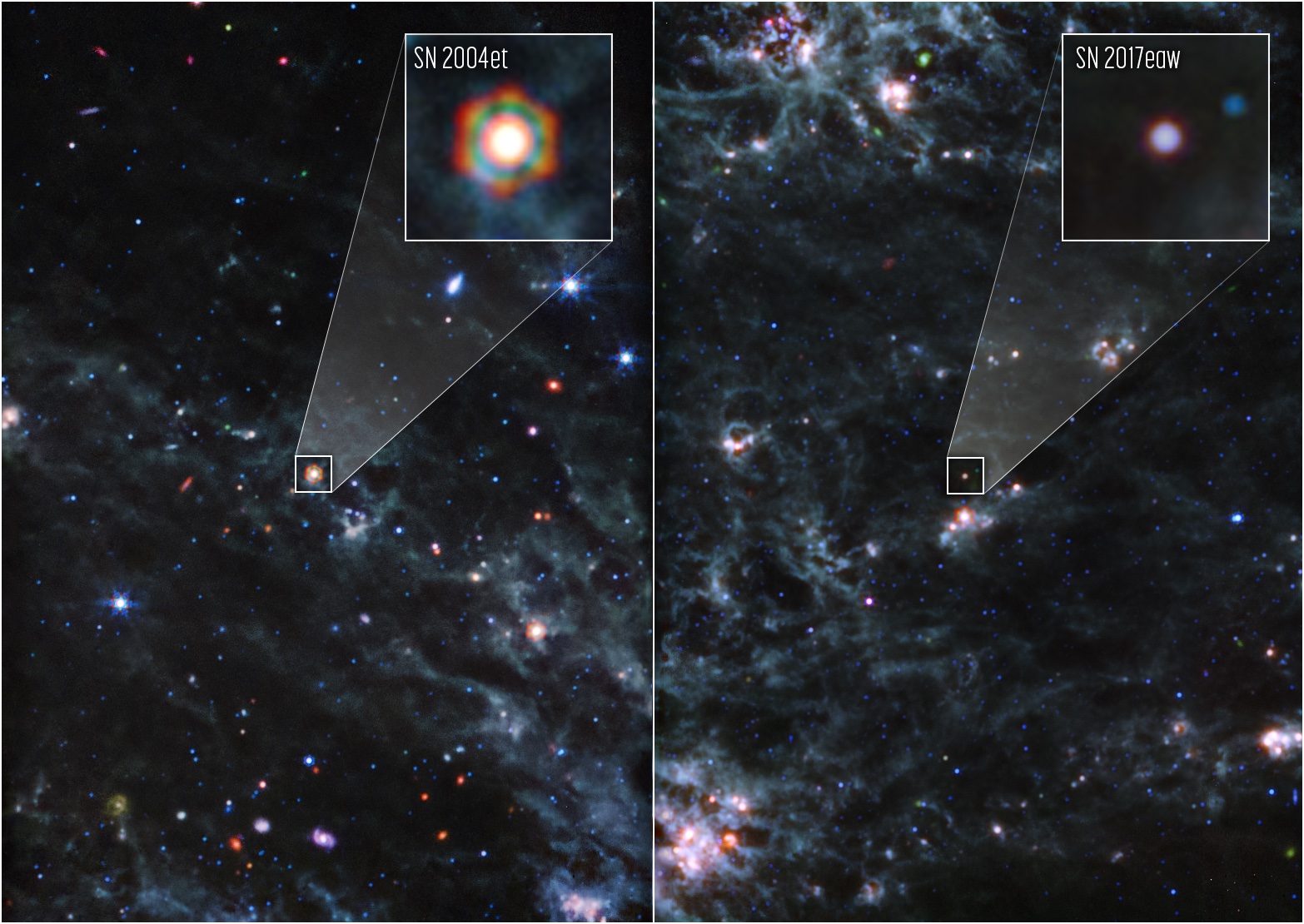Every now and then there’s an interesting discovery that helps us fill in a gap in our understanding of the universe. In the case of this latest discovery, we now have confirmation of a process we’ve long assumed, but have had little direct evidence for. It all has to do with cosmic dust.
According to the standard model of cosmology, all the elements of the universe with the exception of hydrogen and helium (and some traces of lithium and such) formed not in the big bang, but in astrophysical processes. Cosmic radiation, stellar collisions, and supernovae. The elements that make up us in particular, such as carbon, nitrogen, and oxygen, were formed in that last one. So we’ve assumed.
We’ve known for a while that these elements are fused in the hearts of large stars, and we know that when stars explode they cast off elements into interstellar space. But one of the things we haven’t known is whether supernovae are the main source of interstellar dust.
Dust plays a central role not only as a source of heavier elements but also in the formation of planets around young stars. Without dust, planets such as Earth would be much less likely to form. Since dust can be found in supernova remnants, it makes sense to assume that supernovae create dust. But it could also be the case that supernovae mostly cast off molecular gas, which then coalesces to dust through some process we don’t understand. We didn’t really have evidence either way.

Then in 2014, the Atacama Large Millimeter/submillimeter Array (ALMA) observed copious amounts of dust in the supernova remnant 1987A. This confirmed that supernovae are a significant source of interstellar dust. So astronomers assumed the same process occurred in the early universe. As the first supernovae occurred in the cosmos, they created a source of dust out of which stars and planetary systems could form. This would explain why young galaxies are often dusty with a high rate of star formation.
But we hadn’t directly observed this process in the early universe until now. Using data from the James Webb Space Telescope (JWST), a team observed high quantities of dust in the remnants of two supernovae, SN 2004et and SN 2017eaw. In the case of 2004et, the team observed 5,000 Earth-masses worth of dust. Given how young these supernova remnants are, it demonstrates how quickly supernovae can seed dust into a galaxy, and how they can contribute large quantities to interstellar space. So we can now be confident that supernovae did in fact seed early galaxies with dust.
In the future, the team hopes to study what galactic dust can teach us about the supernovae that created it. In the case of SN 2004et and SN 2017eaw, both are Type II supernovae, also known as core-collapse supernovae. Because we saw them explode, we have a good idea of what their chemical composition was. By comparing this to the composition of their dust, astronomers will have a better understanding of how variations in supernova origins can lead to variations in dust composition. And that will further advance our understanding of how early galaxies evolved.
Reference: Shahbandeh, Melissa, et al. “JWST observations of dust reservoirs in type IIP supernovae 2004et and 2017eaw.” Monthly Notices of the Royal Astronomical Society 523.4 (2023): 6048-6060.

